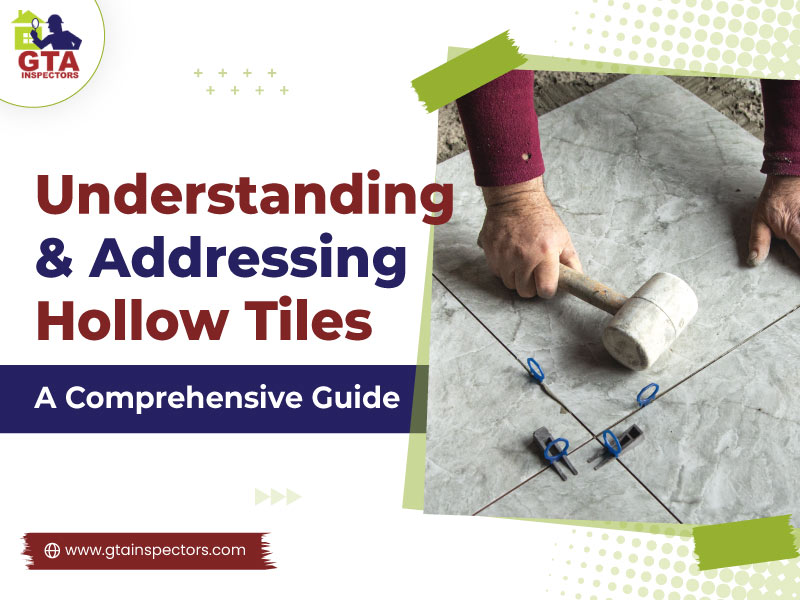|
As homeowners, we often take the integrity of our homes for granted, trusting that the walls and floors around us are sturdy and reliable. However, one common issue that can undermine this trust is hollow tiles.
These seemingly innocuous hollow spaces beneath tiles can lead to many problems if left unaddressed. This comprehensive guide will delve into the causes of hollow tiles, their implications for snagging inspection, and effective strategies for addressing this issue. Hollow Tiles Hollow tiles refer to the voids or gaps between the tile and the substrate beneath it. This condition occurs when there is insufficient bonding between the tile and the underlying material, such as concrete or mortar. Hollow tiles can form due to improper installation techniques, inadequate substrate preparation, low-quality materials, and temperature and humidity fluctuations, among other factors. Implications for Home Inspection Detecting hollow tiles during a home inspection is crucial as they can indicate underlying structural issues or poor workmanship. These voids can compromise the integrity of the flooring system, leading to potential hazards such as loose or cracked tiles, uneven surfaces, and water infiltration. Furthermore, hollow tiles can be a red flag for homeowners as they may signal the presence of other hidden defects within the property. Identifying Hollow Tiles During property snagging, several methods can be employed to identify hollow tiles. One common approach is the "sounding" technique, where the inspector taps the surface of the tiles with a hard object like a hammer or a metal rod. A hollow sound indicates space beneath the tile, signaling a potential issue. Visual inspection and thermal imaging can also be employed to identify discrepancies in temperature or moisture levels, which may indicate the presence of voids. Addressing the Issue Once hollow tiles are identified during a home inspection, it's essential to address the underlying causes to prevent further damage and ensure the longevity of the flooring system. The appropriate remediation strategy will depend on the severity of the issue and the underlying factors contributing to it. In some cases, repairing or replacing individual tiles may suffice, while in more severe cases, removing and reinstalling the entire flooring system may be necessary. Prevention Measures Preventing the formation of hollow tiles starts with proper installation techniques and substrate preparation. This includes ensuring the substrate is clean, level, and debris-free before installing tiles. Additionally, using high-quality materials and following manufacturer guidelines for adhesives and grouts can help minimize the risk of hollow tiles. Regular maintenance, including sealing grout lines and promptly addressing any signs of damage, can also help prevent issues from escalating. In conclusion, hollow tiles can be a telltale sign of underlying structural issues or poor workmanship in a property. Detecting and addressing these voids during a house mold inspections is crucial to maintaining the integrity and safety of the flooring system. Homeowners can ensure their homes' long-term durability and longevity by understanding the causes of hollow tiles and implementing appropriate remediation and prevention measures.
0 Comments
Leave a Reply. |
AuthorWrite something about yourself. No need to be fancy, just an overview. Archives
July 2024
Categories
All
|


 RSS Feed
RSS Feed
